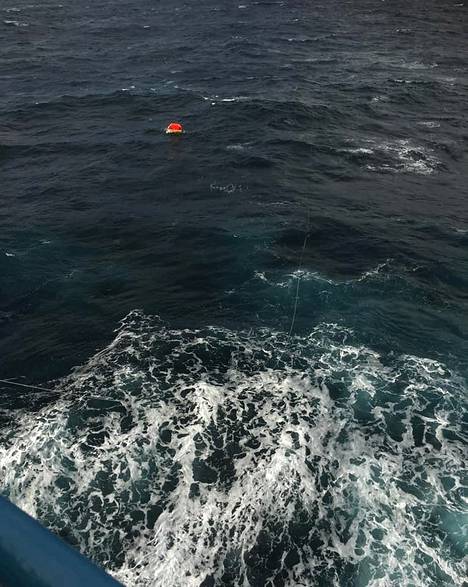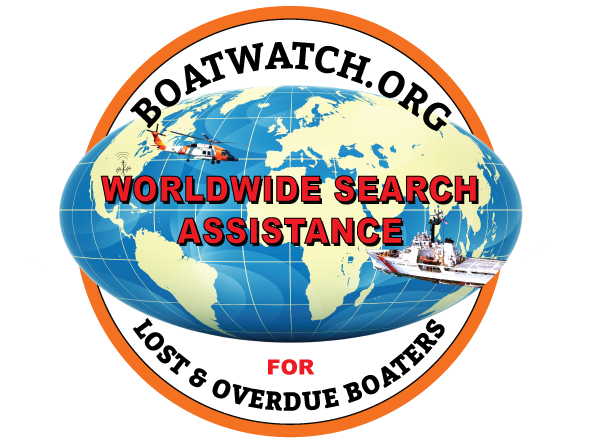The fourth man in a crashed catamaran drowned
11/9/2020, 3:48:12 PM
(Note from Facebook – According to the survivors, on their passage to the Canaries Islands they have hit something just before the TS capsized. Maybe a container. Wind was between 16 to 20 kts. She was the catamaran of Regis Guillemot, an experienced skipper (he won the Route du Rhum in 2002) and founder of Regis Guillemot charter in Le Marin, Martinique. The man on watch was ejected and drown. Sad story.

On Saturday, the cargo ship Midas from the Ålandic Godby Shipping Oy rescued three ocean sailors off the coast of Portugal from the Atlantic Ocean.
The men’s 15-meter catamaran had capsized on Friday and the men had spent the night on top of the capsized ship and then boarded a life raft with the rope detached from the catamaran. A tiny ferry was found in the open ocean using a positioning signal.The fourth member of the catamaran crew drowned.He had been the watchkeeper and had just been inspecting the deck when the ship capsized, says Timo Väänänen, Midas’ manager. He got on the water and disappeared.

The shipwrecked had spent the night on a catamaran. The three rescued are currently in Midas and will arrive in the Azores on Monday at around 7pm Finnish time. The moods in them are very contradictory, relief from salvation, of course, but grief about the loss of a friend, Väänänen describes. Late Saturday night, the Portuguese maritime rescue authorities found the body at sea. Väänänen had to show the rescued a picture of the drowned man sent by the authorities, from which they identified their comrades. It was very tragic, Väänänen says.Rescued are highly experienced ocean sailors.
They were on their way from France to Gran Canaria, from where the journey was to continue later to the Caribbean. The crashed catamaran has participated in major sailing competitions and has crossed the Atlantic many times.
Midas had left Riga, Latvia, and was on his way to Florida when he was given a rescue mission. At 4.30pm on Saturday, UTC time, the Lisbon Maritime Rescue Center called Midas via satellite phone. They said that 50 nautical miles east of us had become a distress signal from the pleasure boat and no contact had been made with the boat since then, so there was no information about the quality of the real distress, Väänänen says. It had been revealed via satellite that the Midas was the closest ship to the moment. We turned the course and it took us about four hours to get there.
At the same time, a Portuguese Coast Guard plane arrived there. Detection was successful thanks to a location signal.

A Portuguese Coast Guard plane circled low. The sea showed a large catamaran lying upside down and a small liferaft near it. The plane was left circling very low. It looked for potential people in the ocean.
The navigation was so hard that Midas’ MOB (Man Over Board) could not be lowered. Also, the Free Fall lifeboat could not be lowered because even if it had been lowered, the lifting would not have been successful. We then did the trick with the sea and the wind so that we could drive the ship as close as I dared to the liferaft, Väänänen says. It was then resorted to a “rocket” device that fired an explosive charge at a thin string up to a couple of hundred yards away. It’s hard to get it going in the right direction in the wind, but we managed to get it pretty close to the life raft.

Rocket rope shot towards the raft. Already the first shot was successful, but for safety the second shot was fired.They then paddle the rope with their last forces and the only paddle, Väänänen describes the progress of the operation. The ferry was then pulled closer. The satametric Midas was turned into a windbreak, after which the landing bridge was lowered and the shipwrecked were allowed to ascend to Midas. They were barefoot, had been in a small life raft for eight hours and before that all night in a catamaran that had fallen in the wrong direction. They stood in the water and waited for sunlight to move to the liferaft, which was attached to the catamaran by a rope, Väänänen says.

The seawater temperature was 17-18 degrees. Throughout the men, the men had no idea if anyone had received their distress signal. They had been in a rather desperate situation. After this, Midas was allowed to continue the interrupted journey. We are now deviating from the route enough to visit the Azores in front of Ponta Delgada, where you will be picked them up, Väänänen says. Midas will then head to Florida and there to Port Everglades in Lauderdale, from where it will open a line to Haiti for at least a year. Väänänen has been skipping cargo ships in the world’s seas for 17 years. This is the first time I have been in such a situation. There was a challenge, but with the help of a good crew and good cooperation, we succeeded.

Captain Timo Väänänen (left) with his crew on the deck of Midas. Photo: Kalle Lehtinen
The 108-meter-long and 17-meter-wide Midas (formerly Bore Sea), completed in Hamburg in 1990, flies the Finnish flag. The nine-person crew consists of two Filipinos and seven Finns. Godby Shipping is an Åland-based family business led by CEO Dan Mikkola with seven cargo ships.


